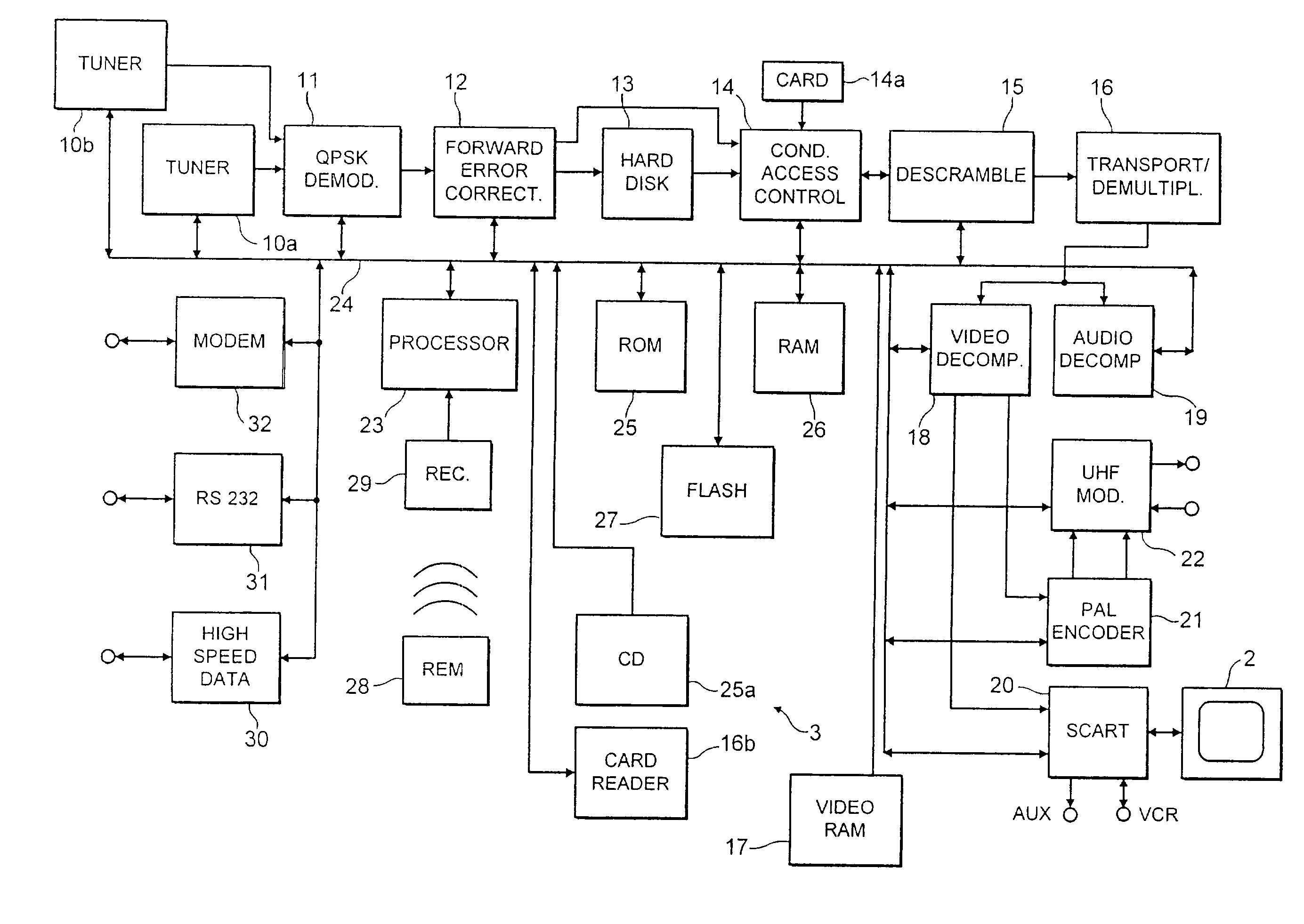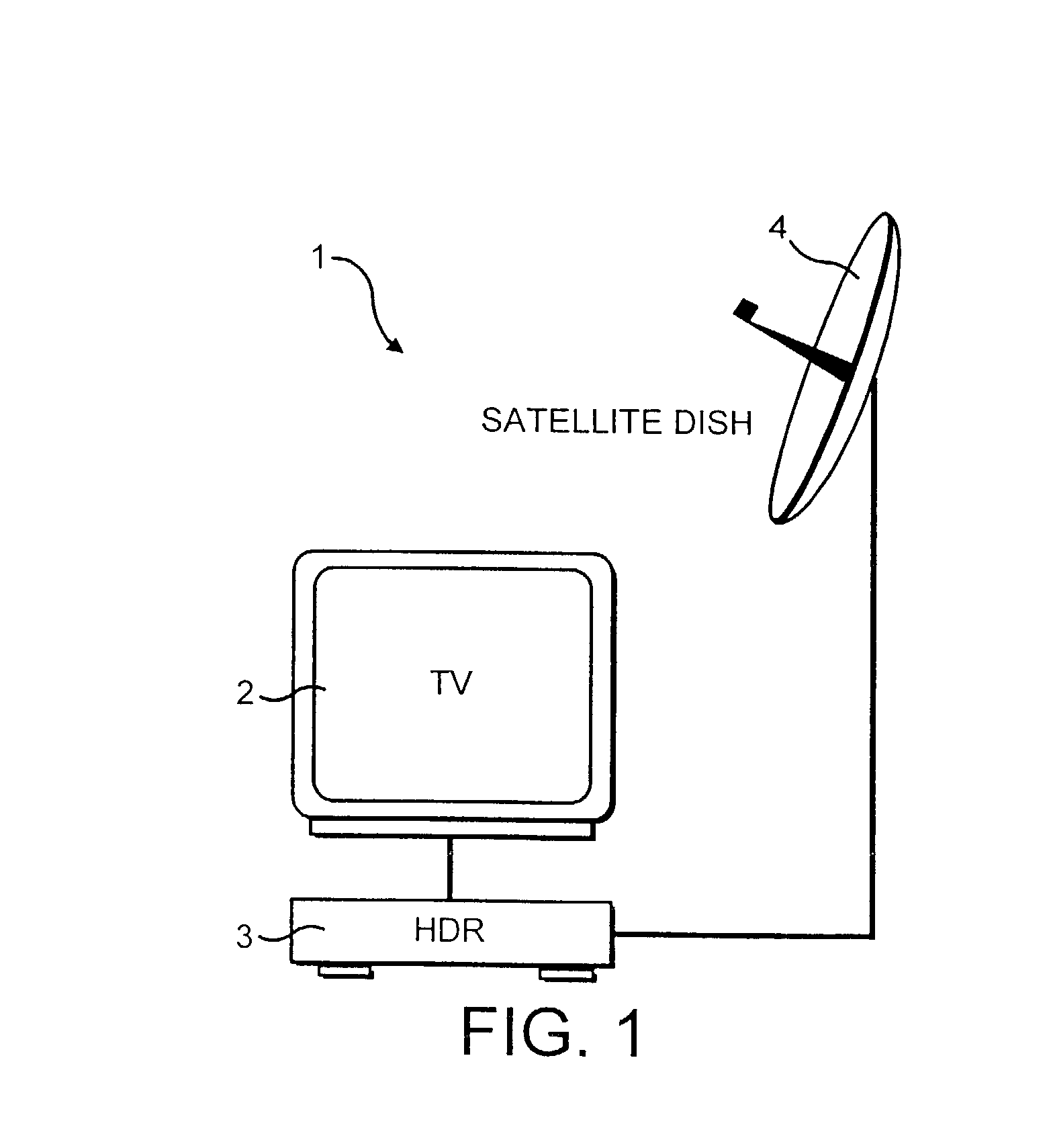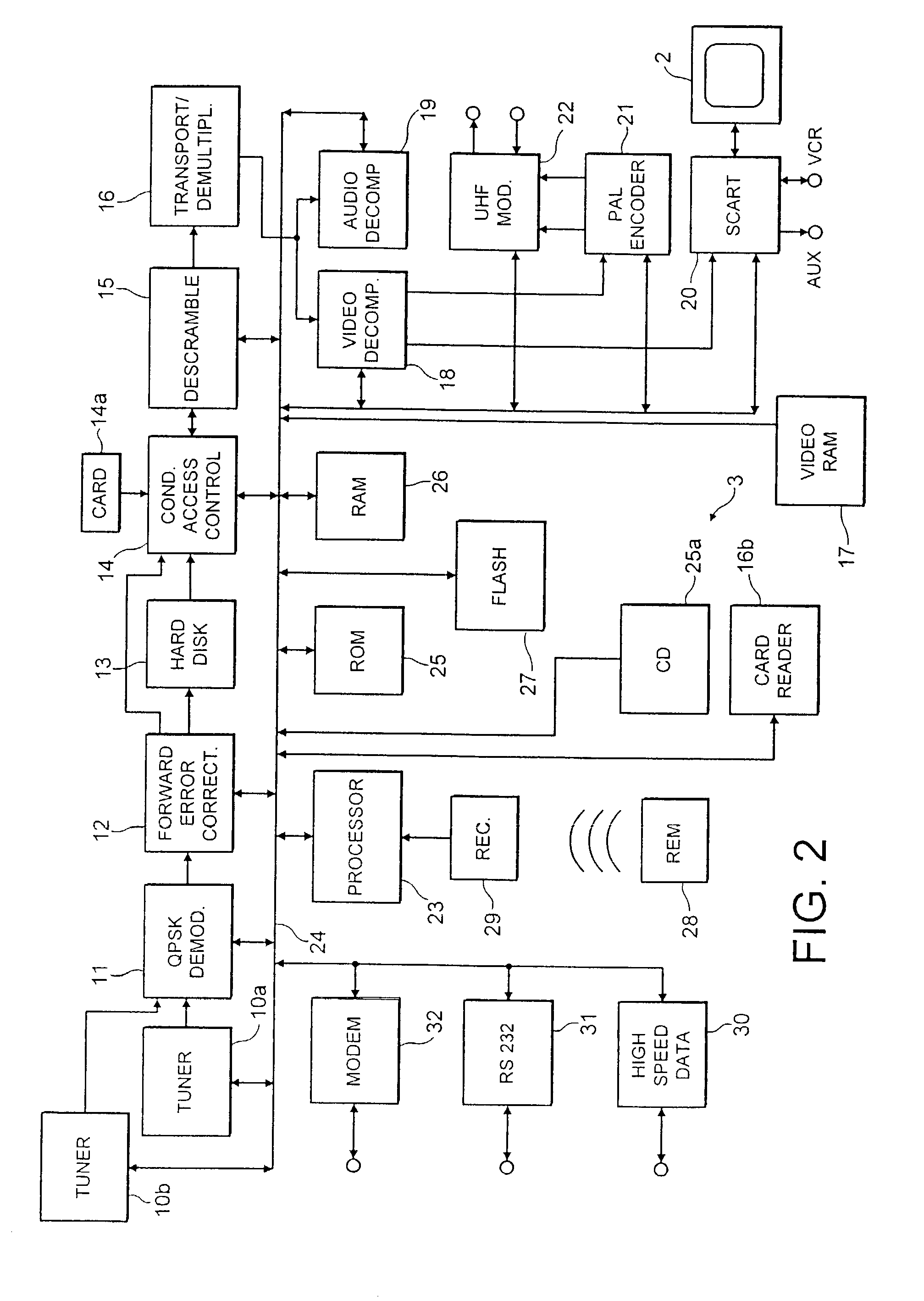Receivers for television signals
a television signal and receiver technology, applied in the field of television signal receivers, can solve the problems of unsatisfactory requirements for establishing a link with the hdr via a telephone network, increasing the possibility of clashing the programme schedule, and not recording desired programmes, so as to reduce the time shift and reduce the time shift
- Summary
- Abstract
- Description
- Claims
- Application Information
AI Technical Summary
Benefits of technology
Problems solved by technology
Method used
Image
Examples
Embodiment Construction
1. System Overview
[0033]Referring now to FIG. 1 of the accompanying drawings, a television system 1 comprises a television 2 (TV), a hard disk recorder 3 (HDR), and a satellite dish 4. The HDR 3 comprises a satellite receiver which is connected to the satellite dish 4 for reception of signals from a satellite (not shown). The HDR receives signals from the satellite dish 4, including television signals, in a plurality of channels.
2. Hard Disk Recorder (HDR)—Overview
[0034]FIG. 2 of the accompanying drawings shows the HDR 3 in greater detail. Signals from the dish antenna 4 (shown in FIG. 1) are input to first and second tuners 10a and 10b and from there to a quadrature phase shift key (QPSK) demodulator 11. The first and second tuners 10a and 10b are tunable into the same or different channels for simultaneous reception of the same or different television programmes. Demodulated signals are error-corrected by way of a forward error corrector circuit 12. The HDR 3 comprises a hard disk...
PUM
 Login to View More
Login to View More Abstract
Description
Claims
Application Information
 Login to View More
Login to View More - R&D
- Intellectual Property
- Life Sciences
- Materials
- Tech Scout
- Unparalleled Data Quality
- Higher Quality Content
- 60% Fewer Hallucinations
Browse by: Latest US Patents, China's latest patents, Technical Efficacy Thesaurus, Application Domain, Technology Topic, Popular Technical Reports.
© 2025 PatSnap. All rights reserved.Legal|Privacy policy|Modern Slavery Act Transparency Statement|Sitemap|About US| Contact US: help@patsnap.com



